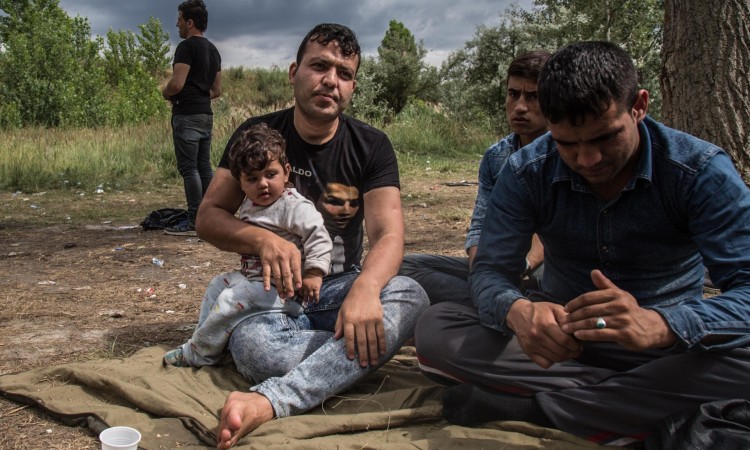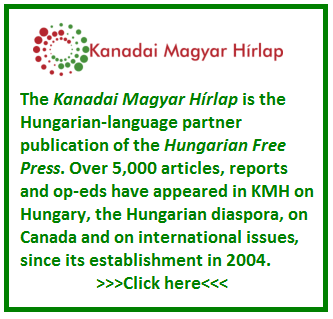I increasingly believe that it is in Hungary’s enlightened self-interest to begin accepting many more of the Syrian and Afghan refugees, rather than stoking fear within Hungarian society and creating a siege mentality, which seems to be the tactic du jour. There is the humanitarian argument, where one might reasonably expect a greater degree of compassion and understanding from Hungarian authorities and from a country that was at the centre of one of the largest twentieth century refugee crises in the western world, following the suppressed 1956 revolution. But if compassion is mistakenly perceived as the talk of weak-kneed liberals, who are too naive to see the impending “danger” posed by opening the doors, even a little, to Muslim refugees and migrants, then there is the argument based on enlightened, calculated self-interest.
Yet Prime Minister Viktor Orbán’s government seems to be doing more than anyone else in building on threat perception: the fear that hundreds of thousands of non-European Muslims are effectively invading Hungary, that they are going to fatally dilute Hungary’s national character, that they are not really refugees, but actually reasonably financially secure economic migrants, and that many of them are criminals, bringing danger and chaos to Hungary’s cities. Máté Kocsis, the Fidesz mayor of Budapest’s 8th District–a traditionally multicultural and economically depressed area of the capital–was among the first to lead a fear campaign against the refugees seen in the district’s parks and public squares as of late.
“The refugees don’t respect the rules of peaceful co-existence. They are loud, they litter and they loiter in groups, often stoking fear in people,” writes Mr. Kocsis. “They use parks and public spaces as toilets, they leave garbage behind, they are confrontational with passers-by and they cause fear,” he added. Mayor Kocsis then added with some pride, that police managed to arrest 68 refugees in his district, by raiding “hiding places” and internet cafés in the neighbourhood, and other areas where asylum-seekers have been known to gather.
Fidesz government spokesman Zoltán Kovács continued with the scare tactics, throwing around “alarming,” but ultimately misleading figures. Mr. Kovács noted that his government expects 250,000 to 300,000 asylum seekers, primarily from Syria and Afghanistan, to cross into Hungary by the end of the year. Thus far, the number of arrivals has surpassed 95,000. The far-right Alfahír website, which is affiliated with the extremist Jobbik party, picked up this news item, and made it into a headline piece. What Mr. Kovács neglects to mention is that of all European Union member states, Hungary accepts proportionally among the fewest of these refugee applications. In fact, according to 2014 Eurostat figures, Hungary accepted proportionally the smallest number of refugee applications–just 9%. In concrete numbers, this means that Hungary granted refugee status to only 510 asylum-seekers in 2014. If that proportion stays the same in 2015, and if Mr. Kovács is correct in noting that as many as 300,000 may cross the border by December, then in the ‘worst case scenario,’ Hungary may have to absorb, at most, 27,000 people. And even then, it must be repeated as often as possible to Hungarians fearful of “the other,” that the majority of refugees see Hungary as merely a transit country, on their way to Germany and Western Europe in general.
Yet it would be decidedly healthy for Hungary to open its doors to newcomers. Firstly, Hungary faces a dramatic and worsening shortage of doctors. According to government statistics, within 10 years 4.65 million Hungarians (or essentially 50% of the population) will not have access to a family physician or to regular, basic health care. In fact, Hungary is expected to have 4,000 fewer practicing doctors within the next decade. Young Hungarian doctors are leaving Hungary en masse, in the hope of much higher salaries elsewhere in the EU and the remaining, ageing medical specialists are retiring at a rapid rate. At the moment, an average Hungarian family doctor must care for 416 patients, which is a far higher number than physicians in the Czech Republic or Austria.
There is no doubt that with training and nostrification, Hungary could absorb and integrate doctors from places like Syria. And undoubtedly, some of the tens of thousands of refugees are, in fact, health care professionals.

Dr.Yama Nayab sits with his daughter in Szabadka (Hungarian-dominated northern Serbia), waiting to cross into Hungary. Dr. Nayab was a surgeon in Afghanistan. Photo: Sima Diab/The Guardian.
Hungary does actually have some experience with integrating students and young professionals from the Middle East, north Africa and from other parts of the world. During the seventies and eighties, thousands of foreign students studied at Hungarian universities, some learned Hungarian fluently, married Hungarians and stayed. Growing up in Canada, in a Hungarian family and with lots of Hungarian family friends, there were several close friends who were in this boat: they arrived in Hungary on an exchange as young students, mastered the Hungarian language fantastically, married a Hungarian and integrated, basically seamlessly. In my eyes–as a child–it never even crossed by mind that they were not just as Hungarian as anyone else in my family’s circle. Skin tone, religion (that discussion never even came up) or other cultural indicators never made them “un-Hungarian.”
From a demographic perspective, Hungary desperately needs a boost. No amount of pro-natalism and “family-friendly” rhetoric from the Hungarian right has succeeded in halting or reversing the declining population. Hungary’s population peaked in 1980, at 10.7 million. By 2010, it slipped below 10 million and by 2013 it dropped to 9.9 million. The annual decline (0.25%) is among the highest in Europe. In fact, the population is dropping at a faster pace only in Bulgaria (0.81%), Latvia (0.63%) and Lithuania (0.28%). In just the first two months of this year, Hungary’s population declined by another 10,829 people.
László Kövér, the outspoken speaker of the Hungarian parliament and a longstanding leader within Fidesz, said last year that the demographic decline “threatened to bring to an end the thousand year old Hungarian state,” if the situation was not successfully reversed or halted within the next 10 to 20 years.
If the situation is, indeed, so gloomy in the minds of key Fidesz leaders, how can they take the luxury to not explore the possibility of increased immigration and, in this case, reaching out to young Syrians, Afghans and others, with programs aimed at integrating them fully into Hungarian society?
Hungary has a long history of being a multicultural and ultimately also an assimilationist society. It would be foolish to suggest that Hungary could (or should) simply import, verbatim, the multiculturalism and immigration policies of other counties, such as Canada. But if social justice and compassion will not motivate Hungarian authorities, when faced with tens of thousands of asylum-seekers on their borders, then calculated self-interest should encourage them to at least consider the possibilities.



